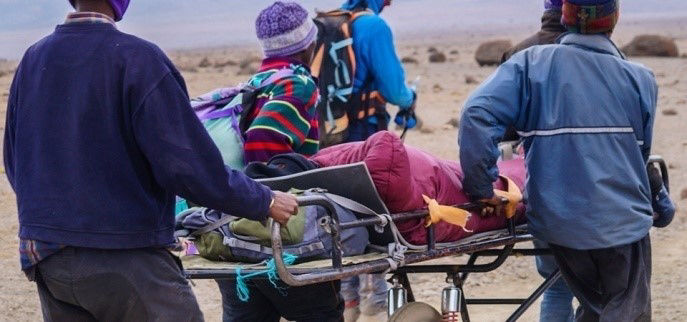We focus on safety and your health is our number one priority. Kilimanjaro climb is the adventure of a lifetime. This mountain has captured the thoughts of adventurers for more than ten years.
Mount Kilimanjaro is the tallest mountain in Africa and at 5,895 meters and so popular in the world, its height has earned its place on the seven summits which are different of the other tallest mountains on each of the seven continents.
Kilimanjaro is among of the tallest mountain worldwide that doesn’t require any technical skills to climb, which makes it accessible to anyone in reasonably good health technically speaking Mount Kilimanjaro is also safe compared to other mountains of similar altitude and the risks are low not similar to other mountains.
However, this does not mean that it is easy to summit or that there are no risks involved. Mount Kilimanjaro has a summit success rate of only 60% and it is generally reported that approximately 10 climbers die on Kilimanjaro each year, though we believe the actual number to be a many.
The underlying causes why climbers do not reach the summit is altitude sickness, also known as instant mountain sickness (AMS), and this is caused by the high elevation. Altitude sickness on Kilimanjaro is also the main risk that makes mount Kilimanjaro a potentially dangerous mountain to climb, especially when compared to other popular touristic mountain destinations.
On climbing Kilimanjaro you may feel these altitude effects from as low as (1,500 meters) (4,921 feet) above sea level. While such mild symptoms of altitude sickness are not comfortable, you generally do not need to worry much about your health and safety when you experience them.
On the high point of 5,895 meters Kilimanjaro is in the extreme altitude zone and almost everyone who climbs it will be affected by altitude sickness, in some way. For most climbers, the symptoms of altitude sickness will remain limited to shortness of breath, dizziness, nausea or headaches; neither of which is dangerous.
However, when climbers acclimatize poorly, altitude sickness may become more severe and, in extreme cases, lethal. Beware that altitude sickness can strike suddenly and unexpectedly. Young, fit and healthy climbers are as much at risk of altitude sickness as anyone else. When attempting to climb Kilimanjaro, you are always taking a risk.
With the right advance preparation and planning, however, it is possible to minimize the risks and largely mitigate the effects of altitude sickness, so that you can prevent it from becoming more severe and get adequate treatment when you need it.
This includes choosing the right hiking route climbing with a responsible Kilimanjaro operator who employs experienced and well-trained guides, and following the golden rules of altitude acclimatization.
We get asked this question a lot and rightly so being serious about climbing Kilimanjaro means you have to be serious about Kilimanjaro safety. We cover the best practice safety measures to ensure your climb is as safe and stress free as possible.





